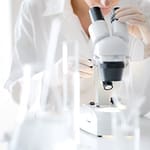About Parkinson’s Disease
 Parkinson’s disease (PD) is a degenerative disorder of the central nervous system that belongs to a group of conditions called movement disorders. It is both chronic, meaning it persists over a long period of time, and progressive, meaning its symptoms grow worse over time. As nerve cells in parts of the brain become impaired or die, people may begin to notice problems with movement, tremor, stiffness in the limbs or the trunk of the body, or impaired balance. As these symptoms become more pronounced, people may have difficulty walking, talking, or completing other simple tasks. Not everyone with one or more of these symptoms has PD, as the symptoms appear in other diseases as well.
Parkinson’s disease (PD) is a degenerative disorder of the central nervous system that belongs to a group of conditions called movement disorders. It is both chronic, meaning it persists over a long period of time, and progressive, meaning its symptoms grow worse over time. As nerve cells in parts of the brain become impaired or die, people may begin to notice problems with movement, tremor, stiffness in the limbs or the trunk of the body, or impaired balance. As these symptoms become more pronounced, people may have difficulty walking, talking, or completing other simple tasks. Not everyone with one or more of these symptoms has PD, as the symptoms appear in other diseases as well.
The precise cause of PD is unknown, although some cases of PD are hereditary and can be traced to specific genetic mutations. Mutations of the LRRK2 and PARK genes are associated with Parkinson’s disease. Surprisingly, mutations of these same genes are involved with Crohn’s disease and leprosy (caused by Mycobacterium leprae), which may indicate that the common factor between all three diseases is a susceptibility to mycobacteria. See below for more detailed research articles.
Most cases of Parkinson’s disease are sporadic and does not typically run in families. It is thought that PD likely results from a combination of genetic susceptibility and exposure to one or more unknown environmental factors that trigger the disease. The most common symptoms result from the loss of neurons in an area near the base of the brain called the substantia nigra. Normally, the neurons in this area produce an important brain chemical known as dopamine. Dopamine is a chemical messenger responsible for transmitting signals between the substantia nigra and the next “relay station” of the brain, the corpus striatum, to produce smooth, purposeful movement. Loss of dopamine results in abnormal nerve firing patterns within the brain that cause impaired movement. Studies have shown that most people with Parkinson’s have lost 60 to 80 percent or more of the dopamine-producing cells in the substantia nigra by the time symptoms appear, and that people with PD also have loss of the nerve endings that produce the neurotransmitter norepinephrine.
Norepinephrine, which is closely related to dopamine, is the main chemical messenger of the sympathetic nervous system, the part of the nervous system that controls many automatic functions of the body, such as pulse and blood pressure. The loss of norepinephrine might explain several of the non-motor features seen in PD, including fatigue and abnormalities of blood pressure regulation.
The affected brain cells of people with PD contain Lewy bodies, which are deposits of the protein alpha-synuclein. The role of Lewy bodies in PD is under investigation, but some research suggests that the cell’s protein disposal system may fail in people with PD, causing proteins to build up to harmful levels and trigger cell death. Additional studies have found evidence that the clumps of protein that develop inside brain cells of people with PD may contribute to the death of neurons. Some researchers speculate that the protein buildup in Lewy bodies is part of an unsuccessful attempt to protect the cell from the toxicity of smaller aggregates, or collections, of synuclein. Additionally, oxidative stress-related changes, including free radical damage to DNA, proteins, and fats, have been detected in the brains of individuals with PD.
The average life expectancy of a person with PD is generally the same as for people who do not have the disease. There are many treatment options available for people with PD. However, in the late stages, PD may no longer respond to medications and can become associated with serious complications such as choking, pneumonia, and falls. PD is a slowly progressive disorder. It is not possible to predict what course the disease will take for an individual person. One commonly used scale neurologists use for describing how the symptoms of PD have progressed in a patient is the Hoehn and Yahr scale:
- Stage one — symptoms on one side of the body only.
- Stage two — symptoms on both sides of the body. No impairment of balance.
- Stage three — balance impairment. Mild to moderate disease. Physically independent.
- Stage four — severe disability, but still able to walk or stand unassisted.
- Stage five – wheelchair-bound or bedridden unless assisted.
No cure for PD exists today, but research is ongoing and medications or surgery can often provide improvement with motor symptoms. Medications for PD fall into three categories:
- Drugs that increase the level of dopamine in the brain. The most common drugs for PD are dopamine precursors; substances such as levodopa that cross the blood-brain barrier and are then changed into dopamine. Other drugs mimic dopamine or prevent or slow its breakdown.
- Drugs that affect other neurotransmitters in the body in order to ease some of the symptoms of the disease, such as drugs that are effective in reducing tremors.
- Drugs that help control the non-motor symptoms of the disease, like depression.
Deep brain stimulation therapy uses an electrode surgically implanted into part of the brain to stimulate the brain in a way that helps to block signals that cause many of the motor symptoms of PD. Complementary and supportive therapies are used by some PD patients and include diet and exercise modifications, massage therapy, yoga, hypnosis, acupuncture, and techniques which optimize posture and muscle activity.
The Possible Role of MAP in Parkinson’s Disease
 Mycobacterium avium spp paratuberculosis (MAP) has been found in a number of different human diseases. The role that MAP plays in any of these conditions is still the subject of debate, and further research is necessary. Human Para will add research studies as they are released.
Mycobacterium avium spp paratuberculosis (MAP) has been found in a number of different human diseases. The role that MAP plays in any of these conditions is still the subject of debate, and further research is necessary. Human Para will add research studies as they are released.
M. paratuberculosis and Parkinson’s disease–is this a trigger. (December 2014)
Recent genetic research has discovered an association between Crohn’s disease, leprosy and Parkinson’s disease (CARD15). These genetic profiles are associated with the susceptibility to intracellular pathogens, such as mycobacteria. The author proposes that the genetic defects found in PD create a “permissive” environment for infection with MAP, which begins as an intestinal infection and spreads via the vagus nerve to the central nervous system.
Is there a role for Mycobacterium avium subspecies paratuberculosis in Parkinson’s disease? (April 2016)
The researchers here looked at whether it would be possible for antibodies to MAP to cross-react with the “self” Znt proteins associated with Parkinson to trigger the disease by a molecular mimicry model. The immune response toward MAP3865c protein, ZnT3 and ZnT10 was evaluated. The researchers found the presence of MAP DNA in PD patients by PCR and antibodies to MAP3865c proteins, which is consistent with MAP infection but not cross-reaction with human Znt proteins.
Functional variants in the LRRK2 gene confer shared effects on risk for Crohn’s disease and Parkinson’s disease. (January 2018)
Researchers conducted a genome-wide association study in 2,066 Crohn’s disease patients and 3,633 controls from the Ashkenazi Jewish population. Variants in the LRRK2 gene were found to confer risk or protection from Crohn’s disease. Variants in the LRRK2 gene are also known risk factors for Parkinson’s disease . The cohort was extended to 24,570 Crohn’s, Parkinson’s and control subjects of Jewish and non-Jewish heritage. The same risk and protective effects were seen in this group, with one LRRK2 mutation carrying a risk of Crohn’s or Parkinson’s disease, and the other mutation providing a protective effect. These results suggest that the two diseases are more likely to occur together, and may share a similar cause. Also of note: These same mutations in the LRRK2 gene are known to increase susceptibility to mycobacterial disease such as tuberculosis and leprosy.
